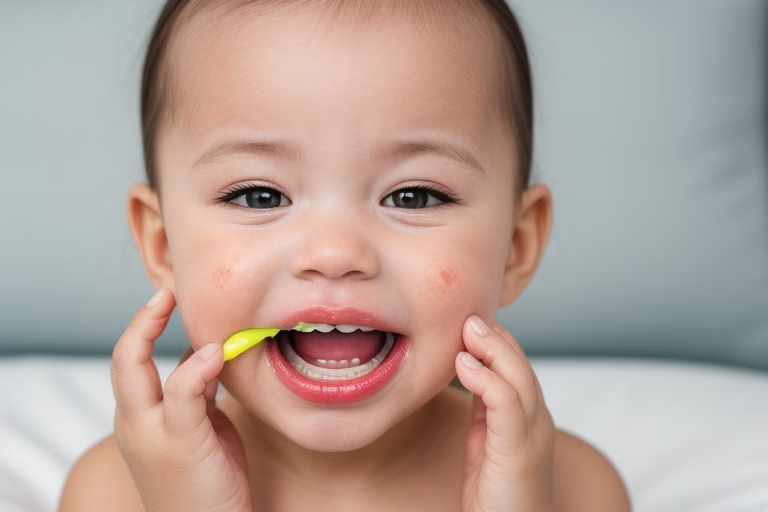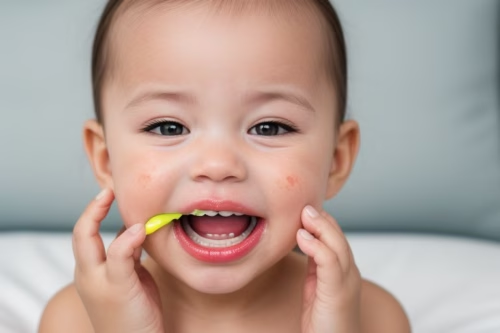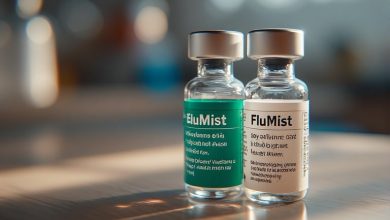
Teething is a milestone that marks an exciting yet challenging period for both babies and their caregivers. As new teeth begin to emerge, the resulting drooling and irritation can lead to a common yet distressing condition known as a teething rash. In this in-depth guide, we explore what a teething rash is, its symptoms, and how you can treat and prevent it. Our comprehensive approach covers everything from daily care routines to differentiating teething rash from other skin conditions, ensuring you have the tools to keep your baby comfortable and their skin healthy.

Understanding Teething and Its Effects on Baby’s Skin
What Is Teething?
Teething is the process by which a baby’s first set of teeth (often called primary teeth) push through the gums. This milestone typically begins around 6 months of age and continues into early childhood. While teething is a natural part of development, it is accompanied by symptoms that may include irritability, a slight rise in body temperature (usually remaining under 100°F or 37.8°C), sleep disturbances, and increased drooling. The excess saliva produced during this time can sometimes lead to skin irritation—a condition known as a teething rash.
Why Does Teething Lead to a Rash?
The abundant saliva produced during teething can pool around the mouth, chin, cheeks, neck, or chest. Saliva contains digestive enzymes and sometimes even small food particles, which can break down the delicate skin barrier, leading to redness, chapping, and discomfort. When the skin remains moist for prolonged periods, it creates an ideal environment for bacteria to grow, further aggravating the irritation. Understanding these mechanisms is essential for effective treatment and prevention.
What Does a Teething Rash Look Like?
Recognizing a teething rash is the first step in providing relief to your baby. Although the appearance of the rash can vary, there are some common features to look out for:
- Color and Texture: The rash may appear blotchy, red, or discolored. It can be bumpy or raised and may look chapped or dry in areas where the skin has been exposed to constant moisture.
- Location: The most common areas affected are around the mouth, on the chin, cheeks, neck, and even the upper chest. This is where drool is most likely to accumulate.
- Odor: Occasionally, there might be a slight odor if food particles or milk residue are trapped in the drool.
- Intermittent Appearance: Teething rashes may come and go throughout the teething period, as the amount of drool produced by your baby can vary from day to day.
These visual cues can help you distinguish a teething rash from other common infant skin conditions, such as baby acne or eczema.
Common Signs and Symptoms of Teething Rash
Knowing what symptoms to look for can help you manage your baby’s discomfort more effectively. Here’s a detailed look at the symptoms:
- Redness and Irritation: The skin may become red and irritated, especially in areas frequently exposed to drool.
- Bumpy Texture: Raised bumps or a rough texture can form where saliva consistently moistens the skin.
- Dry or Cracked Skin: As the rash heals, the skin might become dry or even crack, which can be painful for your baby.
- Mild Discomfort: While a teething rash is generally not painful, the associated irritation might make your baby fussy or disrupt their sleep.
- Localized Rash: Typically, the rash is confined to areas that are in direct contact with drool. If you notice the rash spreading to other parts of the body, it might be a sign of a different condition.
Effective Home Treatments for Teething Rash
Treating a teething rash at home is often straightforward. The primary focus is on keeping your baby’s skin clean and dry to prevent further irritation and to promote healing. Here are several effective treatment strategies:
1. Frequent Gentle Cleansing
Daily Care Routine:
Gently wipe your baby’s face with a soft, damp cloth or cotton wool every time you notice drool on their skin. Use lukewarm water to avoid shocking their sensitive skin. Make sure to dry the area thoroughly by patting it with a clean, soft towel.
Tips for Cleaning:
- Use fragrance-free, hypoallergenic wipes if you’re on the go.
- Rinse the cloth frequently to ensure you’re not reapplying bacteria to your baby’s skin.
2. Applying Barrier Creams
Barrier Protection:
Barrier creams such as Vaseline or Eucerin can create a protective layer on your baby’s skin, reducing irritation caused by constant moisture. Apply a thin layer on the affected areas after cleaning.
When to Apply:
- After each cleaning session, particularly before bedtime.
- Whenever you notice the rash beginning to form, as a preventive measure.
3. Changing Clothing and Bedding Frequently
Stay Dry:
Wet clothing and bedding can contribute to prolonged skin exposure to moisture. Make sure to change your baby’s bibs, onesies, and bedding regularly. This not only prevents the buildup of saliva but also reduces the risk of secondary bacterial infections.
4. Natural Remedies and Soothing Measures
Cool Washcloths and Teething Rings:
Offering a cool, damp washcloth or a chilled teething ring can soothe your baby’s gums and reduce the amount of saliva produced during teething. This dual-purpose strategy not only provides relief for sore gums but also minimizes drool accumulation on the skin.
Herbal Remedies:
Some parents find that natural ingredients, such as aloe vera gel (ensure it’s free from additives and fragrances), can help soothe irritated skin. Always perform a small patch test first and consult your pediatrician before introducing any new remedy.
5. Keeping the Air Moisture Balanced
Humidifiers:
In dry climates or during winter months, using a humidifier in your baby’s room can help maintain optimal moisture levels in the air, preventing excessive dryness that might exacerbate the rash once it starts healing. However, make sure to clean the humidifier regularly to avoid mold growth.
Prevention Strategies: Keeping Your Baby’s Skin Healthy
Prevention is always better than cure, especially when it comes to protecting your baby’s sensitive skin. Here are some proactive steps you can take:
1. Use Absorbent Bibs
Smart Bib Choices:
Invest in high-quality, absorbent bibs that catch drool effectively. Change these bibs frequently to keep your baby’s skin dry. Consider bibs with a waterproof backing for added protection.
2. Maintain a Consistent Skincare Routine
Regular Wiping:
Develop a routine of wiping your baby’s face, neck, and chest throughout the day. Keeping the skin free from excessive saliva is key to preventing irritation.
Moisturize:
Once the rash starts to improve, a gentle, fragrance-free moisturizer can help maintain the skin’s natural barrier. Look for products designed specifically for infants.
3. Optimize Feeding Practices
Clean Feeding Environment:
After feeding, ensure that your baby’s face is wiped clean. Whether you’re breastfeeding or bottle-feeding, a quick clean-up can significantly reduce the chances of developing a teething rash.
4. Regulate Pacifier Use
Balanced Use:
While pacifiers can be a soothing tool for teething discomfort, they can also contribute to saliva accumulation. Monitor and balance their use, ensuring that any drool around the pacifier is cleaned promptly.
5. Monitor and Adjust Temperature
Comfortable Environment:
Overheating can exacerbate skin irritation. Dress your baby in lightweight clothing and maintain a comfortable room temperature to reduce sweat and additional moisture on the skin.
Differentiating Teething Rash from Other Baby Rashes
Teething rash shares similarities with several other common infant skin conditions. Distinguishing between these can help you determine the best course of action and when to seek professional advice.
1. Baby Acne
Overview:
Baby acne affects approximately 20% of newborns and typically appears as small red or white bumps on the cheeks and nose. Unlike teething rash, baby acne usually clears up on its own within a few weeks or months.
Key Differences:
- Location: Baby acne is mainly seen on the face, particularly the cheeks and nose, whereas teething rash is concentrated around the mouth and chin.
- Timing: Baby acne commonly appears shortly after birth, while teething rash is associated with the teething period (around 6 months to 1 year).
2. Atopic Dermatitis (Eczema)
Overview:
Atopic dermatitis is a form of eczema that causes dry, scaly, and itchy patches on the skin. In infants, it typically appears on the face, knees, and elbows.
Key Differences:
- Appearance: Eczema tends to be more chronic and widespread, whereas teething rash is usually localized to drool-exposed areas.
- Triggers: While teething rash is directly linked to saliva exposure, eczema is often triggered by genetic factors and environmental allergens.
3. Fifth Disease (Slapped Cheek Syndrome)
Overview:
Fifth disease, caused by parvovirus B19, is known for its characteristic “slapped cheek” rash. This condition not only affects the cheeks but may also cause a lacy red rash on the body.
Key Differences:
- Contagiousness: Fifth disease is contagious, unlike the non-infectious teething rash.
- Accompanying Symptoms: Fifth disease often comes with mild fever, headache, and general malaise, which are not typical of a teething rash.
4. Hand, Foot, and Mouth Disease
Overview:
This viral illness, commonly seen in children under 5, presents with red spots on the palms, soles, and sometimes the buttocks, accompanied by mouth sores and fever.
Key Differences:
- Distribution: The rash in hand, foot, and mouth disease is not limited to areas around the mouth and is accompanied by systemic symptoms like fever and sore throat.
- Course: The illness follows a different progression and is usually managed with supportive care.
5. Meningitis-Related Rash
Overview:
In rare cases, a rash can be a symptom of meningitis, a serious infection of the brain and spinal cord membranes. The rash in meningitis is typically non-blanching (does not fade when pressed) and may be accompanied by high fever and other neurological symptoms.
Key Differences:
- Urgency: A non-blanching rash, especially if accompanied by a stiff neck, headache, or fever above 101°F (38°C), is a medical emergency and not a sign of teething.
- Location: Meningitis rashes are not confined to drool-exposed areas.
Understanding these differences is crucial for proper diagnosis and treatment. When in doubt, consult your pediatrician to rule out any serious conditions.
When to Consult a Pediatrician
While teething rashes are generally harmless and manageable at home, there are instances when professional medical advice is necessary. Consider contacting your doctor if:
- The Rash Appears Infected: Look for signs of infection such as bleeding, pus, or cracking in the affected skin. These could indicate that bacteria have taken hold and may require medical treatment.
- Systemic Symptoms Develop: If your baby develops a high fever (101°F or higher), seems unusually lethargic, or shows signs of distress beyond typical teething irritability, it’s important to seek medical advice.
- The Rash Spreads Unusually: A rash that extends well beyond the areas exposed to drool or begins to appear on other parts of the body may indicate another underlying condition.
- There Is Uncertainty About the Diagnosis: If you’re unsure whether the rash is due to teething or another condition, a pediatrician can help provide clarity and suggest appropriate treatments.
Early intervention is key to ensuring that minor irritations do not develop into more significant issues.
FAQs About Teething Rash
What Causes a Teething Rash?
A teething rash is primarily caused by the excessive drool produced during the teething process. The saliva, which contains digestive enzymes and sometimes food particles, irritates the skin when it remains in contact for too long.
How Can I Prevent My Baby’s Teething Rash?
Preventing a teething rash involves regular cleaning, the use of absorbent bibs, and promptly changing wet clothing and bedding. Applying a protective barrier cream can also help minimize irritation.
Are Teething Rashes Contagious?
No, teething rashes are not contagious. They are a localized skin irritation caused by drool and do not spread from one baby to another.
Can Natural Remedies Help?
Yes, natural remedies like aloe vera gel (free from additives) and cool, damp washcloths can soothe irritated skin. However, always consult your pediatrician before trying new treatments.
When Should I See a Doctor?
You should seek medical advice if your baby’s rash shows signs of infection (such as pus, cracking, or bleeding), if it is accompanied by high fever, or if the rash spreads to other areas of the body.
Additional Tips for Managing Teething Discomfort
Teething is a challenging phase for both babies and their caregivers. Beyond managing the rash, it’s important to address other teething discomforts:
1. Soothe Sore Gums
Teething Toys:
Offer your baby safe, BPA-free teething toys or rings. Chilled (not frozen) teething rings can provide extra relief by numbing sore gums.
Gentle Massages:
Using a clean finger, gently massage your baby’s gums. This can help reduce pain and promote relaxation.
2. Maintain a Calm Environment
Consistent Routines:
Establishing a predictable daily routine can help reduce your baby’s overall stress and make them more resilient to the discomfort of teething.
Comfort and Cuddles:
Extra cuddles, soothing lullabies, and a calm atmosphere can go a long way in helping your baby feel secure during this transitional phase.
3. Monitor Fluid Intake
Stay Hydrated:
Ensure your baby is well-hydrated. Adequate fluids help keep the skin healthy and can reduce irritation caused by dryness, especially in heated indoor environments.
The Role of Nutrition During Teething
Nutrition plays a significant role in a baby’s overall health and can influence the severity of a teething rash. Here are some nutritional tips to support skin health and comfort during teething:
1. A Balanced Diet for Babies
Breast Milk or Formula:
Continue to provide your baby with breast milk or formula as these are crucial sources of hydration and essential nutrients.
Introduction of Solids:
If your baby has started solids, include nutrient-rich foods that promote healthy skin, such as fruits, vegetables, and whole grains. Avoid overly acidic or spicy foods that might irritate the skin further.
2. Foods Rich in Vitamins
Vitamin A and E:
Foods rich in vitamins A and E help maintain skin health and repair. Pureed carrots, sweet potatoes, and avocados are excellent choices for babies who are eating solids.
Omega-3 Fatty Acids:
Incorporating omega-3 fatty acids through age-appropriate foods (such as flaxseed oil added to purees) can help reduce inflammation and improve skin condition.
Integrating Teething Care into Daily Parenting
Taking care of your baby during the teething period involves an integrated approach that addresses both the discomfort of emerging teeth and the resulting skin irritation. By incorporating these practices into your daily routine, you can provide comprehensive care for your little one.
Daily Routine Checklist
- Morning:
- Clean your baby’s face with a damp, soft cloth after breakfast.
- Apply a thin layer of barrier cream on drool-prone areas.
- Ensure fresh, clean bibs are in place during feeding times.
- Afternoon:
- Recheck the skin for any signs of rash development.
- Offer a chilled teething ring during nap time.
- Use a gentle wipe after meals to remove any residual saliva or food particles.
- Evening:
- Prior to bedtime, give your baby a final gentle cleanse.
- Reapply a protective cream to keep the skin dry through the night.
- Change bedding and pajamas if they appear damp or soiled.
Empowering Caregivers
Remember, every baby is unique. What works for one infant may not work for another, so it’s important to be patient and adaptable. Monitor your baby’s responses to different treatments and adjust your care routine accordingly. If you find that a particular remedy is not effective, don’t hesitate to consult your pediatrician for further guidance.
Conclusion
Teething is an inevitable part of your baby’s growth, and while it brings about many challenges, including the discomfort of a teething rash, there are plenty of effective strategies to manage and even prevent this condition. By understanding the causes of teething rash, recognizing its symptoms, and employing a combination of gentle cleansing, protective creams, and lifestyle adjustments, you can provide your baby with much-needed relief.
This comprehensive guide has covered:
- What a Teething Rash Is: A skin irritation caused by excessive drooling during the teething process.
- How to Identify It: Recognizing the rash’s red, bumpy, and chapped appearance in key areas.
- Effective Home Treatments: From gentle cleansing to the use of barrier creams and natural remedies.
- Prevention Tips: Including proper hygiene practices, frequent clothing changes, and using absorbent bibs.
- Differentiating from Other Rashes: How teething rash compares with baby acne, eczema, and other conditions.
- When to Seek Medical Advice: Identifying signs of infection and knowing when professional help is needed.
By integrating these practices into your daily routine and staying proactive, you can help ensure your baby remains comfortable throughout the teething period. Remember, while teething rash is common and usually not serious, always consult with your pediatrician if you have any concerns about your baby’s health.
As you navigate the teething phase, this guide is designed to serve as your go-to resource for practical, step-by-step advice that can ease your baby’s discomfort and boost your confidence as a caregiver. With these strategies in hand, you’re well-equipped to not only manage teething rash but also support your baby’s overall well-being during one of life’s most exciting transitions.


